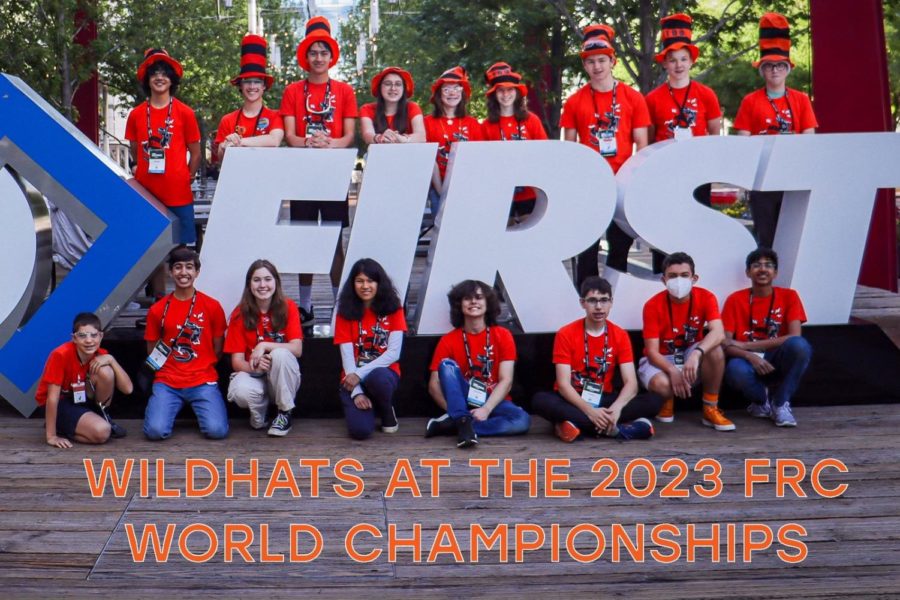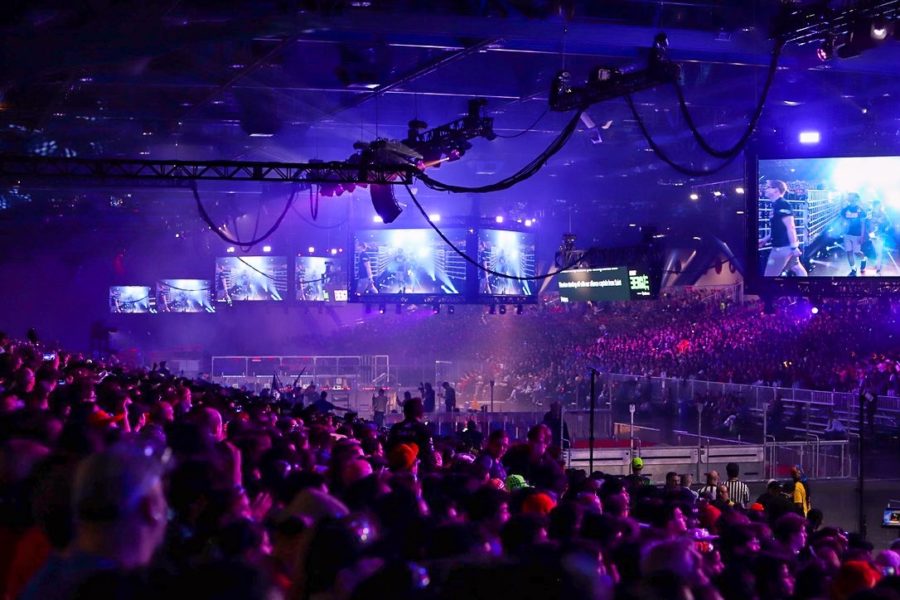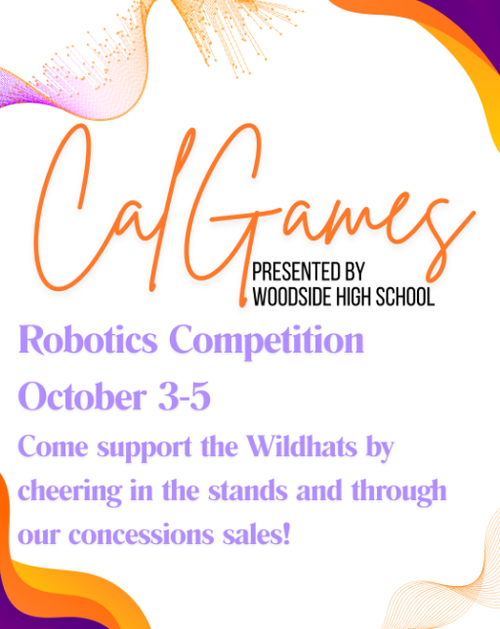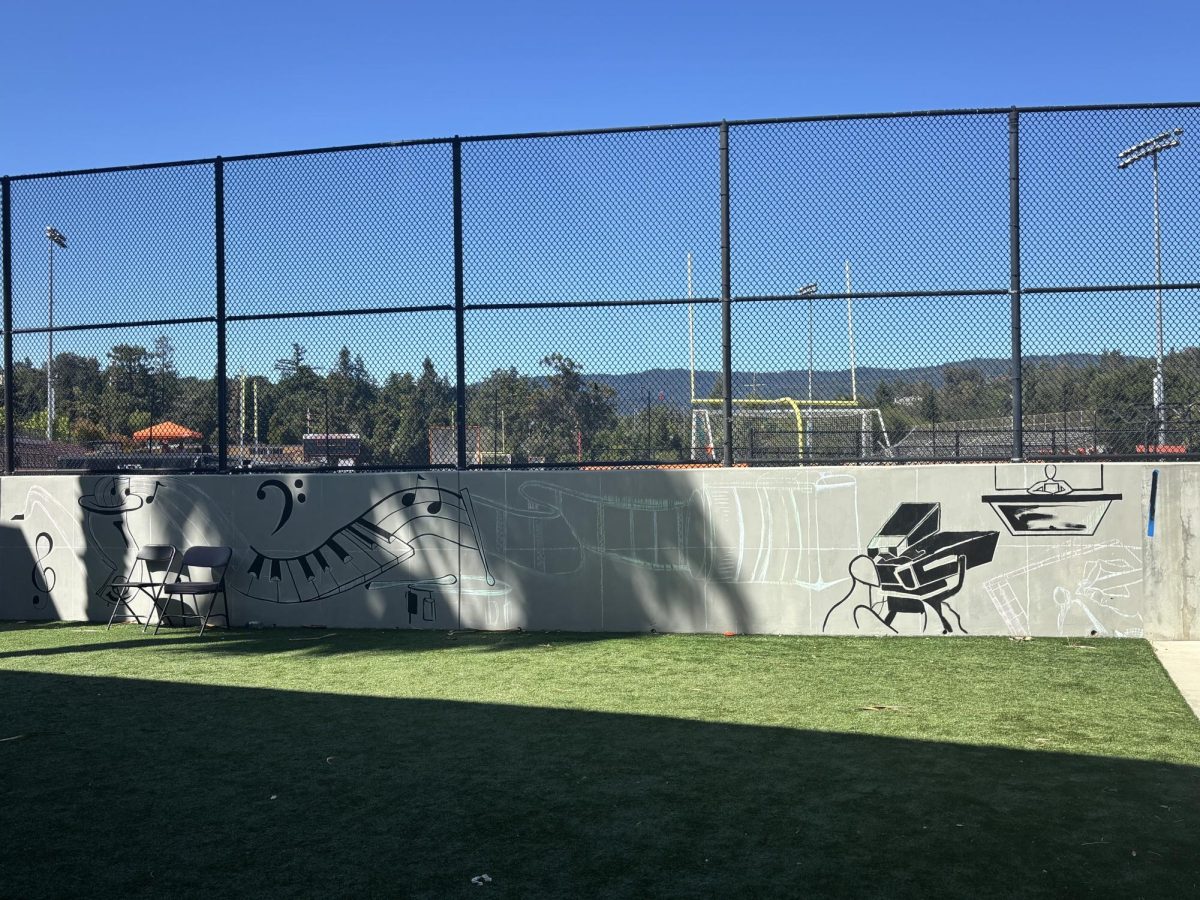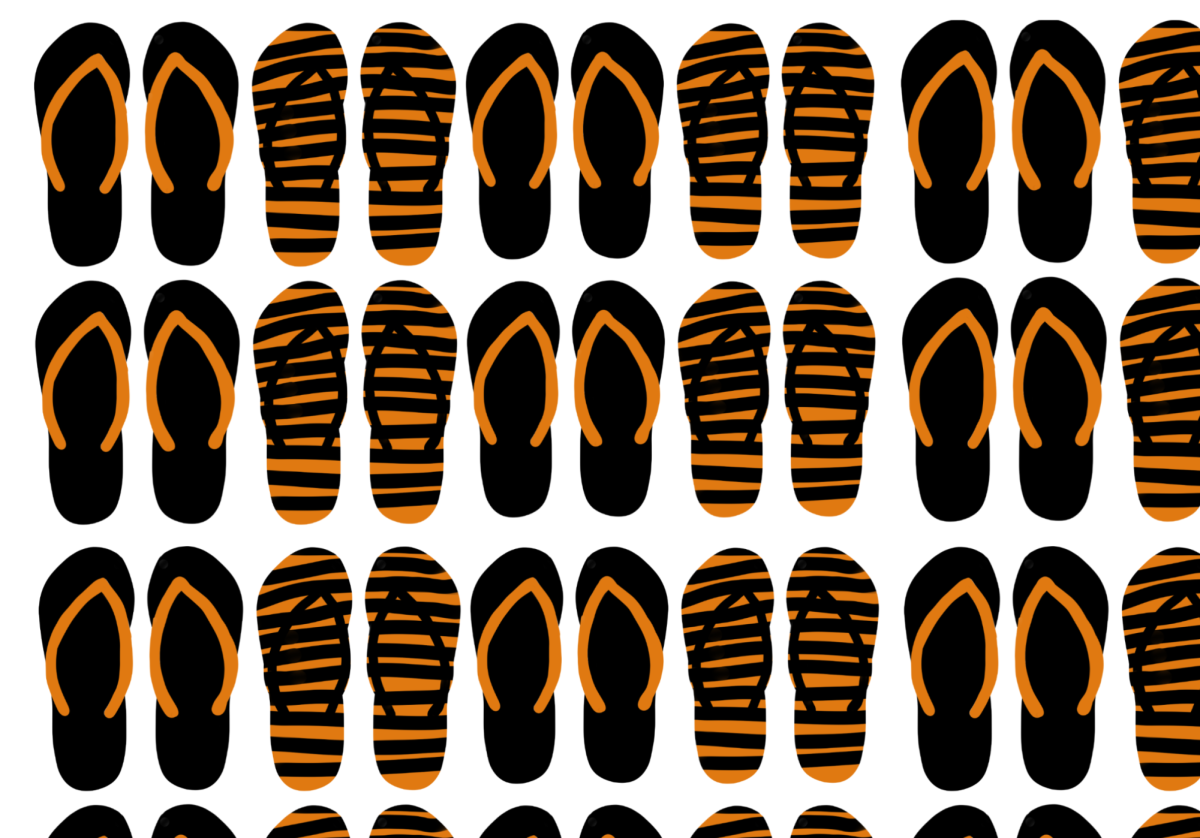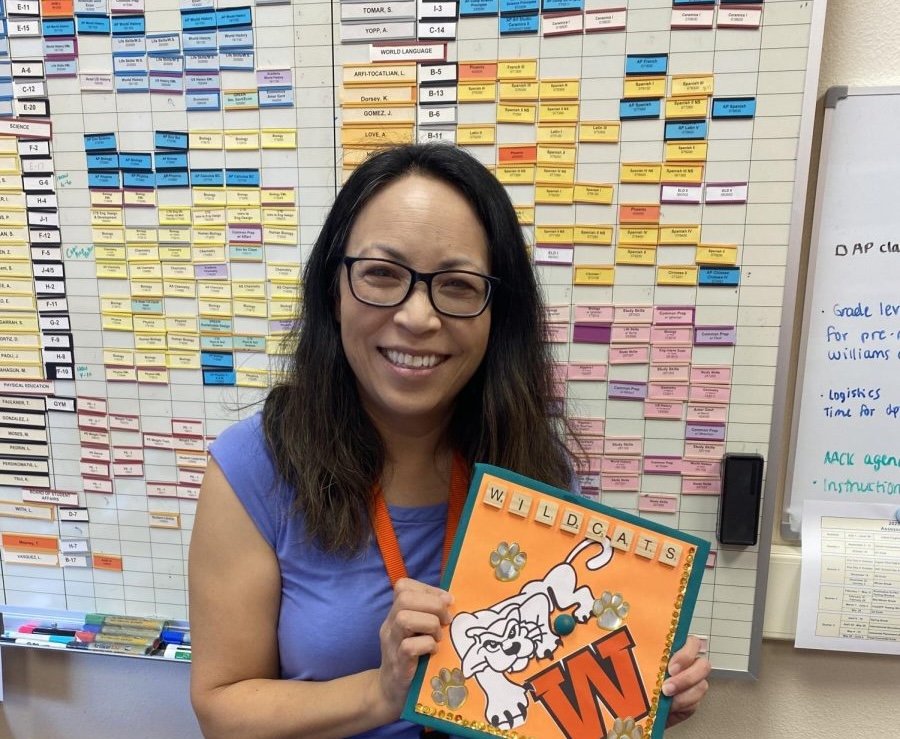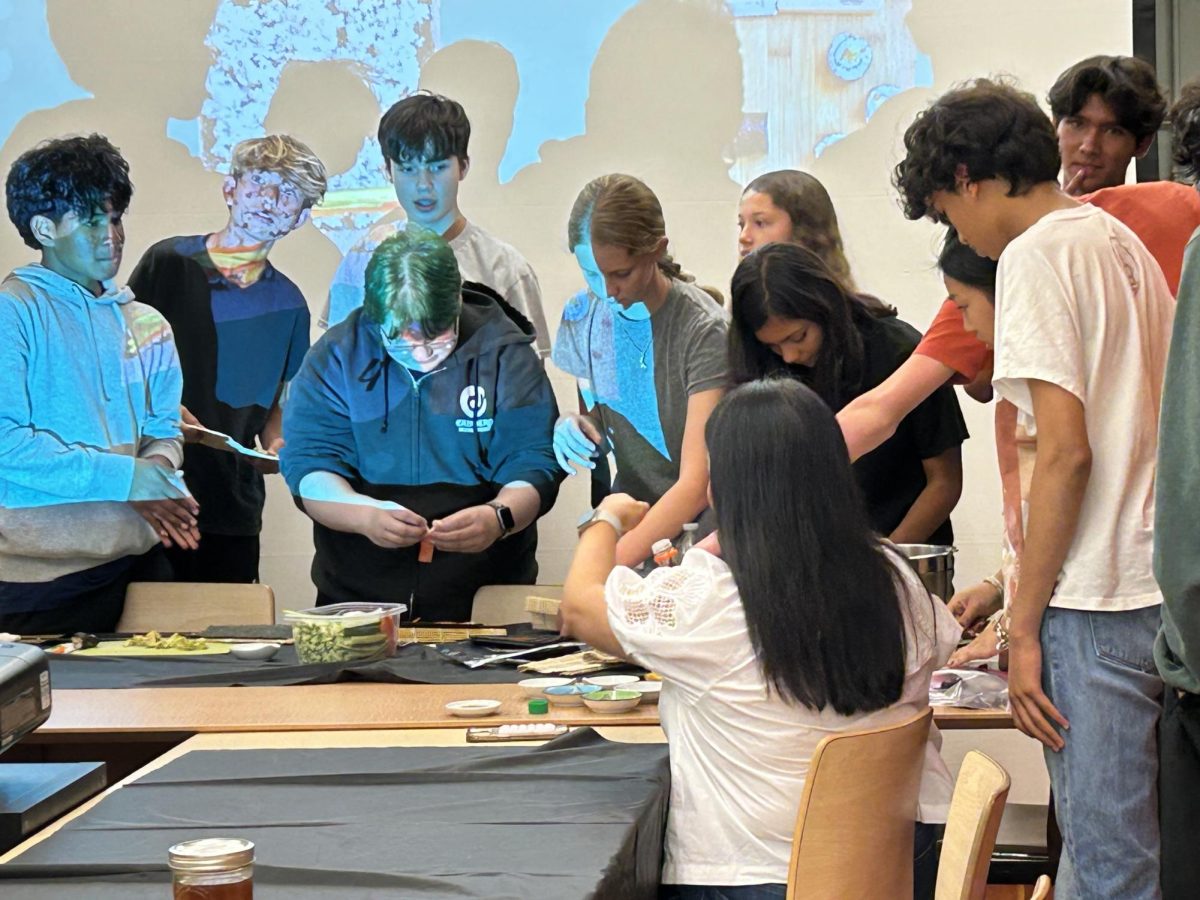Junior Brady Payne carefully maneuvered the controls of Team 100’s, or the Wildhats’, robotic arm attached to the 120-pound robot flying down the FIRST Robotics Competition (FRC) arena. He had only just been promoted to this position the night before after junior Diego Cardenas fell ill. For Payne, the pressure to win under the changing circumstances was on the line.
Despite unforeseen challenges, the Wildhats made it to the FRC World Championships in Houston, winning two out of ten qualifying matches and placing 74th out of 78 teams. This year, the FRC challenge was CHARGED UP, a project designed to test teams’ abilities to build robots that can pick up inflatable cubes and cones to place on poles and platforms. Working in alliances of three, teams compete to place objects in various places or precariously balance them on “Charging Stations”.
“Functionally the robot performed fine,” Payne said. “We ranked lower than we wanted and I think lower than we’re capable of. But there were also some driver difficulties not skill-wise. It’s just stuff that had to be changed around.”
While not the outcome Team 100 expected, spirits were still high as the Wildhat mascot danced across the competition floor and team members adorned themselves with matching orange and black hats straight out of Dr. Seuss’ classic “The Cat in the Hat”.
“Within the team, spirits were actually high, because you’re in Houston with 600 teams,” Payne said. “It’s the biggest competition we’ve ever been to. Most people were all like-minded about robotics. Then we also had a bunch of smaller kids running around because FIRST [does] championships for middle schoolers at the same time as the high school championships.”
However, the FIRST Championship was one event in a much longer process beginning back in January after the release of the 2023 FRC challenge. This announcement marked the start of the build season, a six-week process where the Wildhats and 1000 other robotics teams around the world designed and built a robot using the same set of parts.
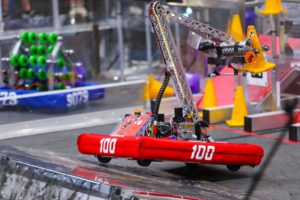
“In the beginning, it’s a lot of brainstorming, prototyping, and splitting into smaller groups [to] figure out what the design of the robot is going to be,” sophomore Milo Pitera said. “Then later on in the build season, we move on to computer-assisted design (CAD), manufacturing, and refinement. [Then] you just keep on building up the robot from there.”
From four to nine pm every day, robotics members brainstormed, prototyped and built the robot under the advice of engineering teacher and Team 100 advisor Philip Hopkins, as well as a skilled set of mentors.
“Generally mentors tend to be people who have, whether it was in a management role or in a technical role, played some role in the engineering industry,” sophomore Ishan Harbury said. “They’re just experienced adults that sometimes are retired or not but make the time to do this service [of] helping out [the] robotics team.”
The completion of the six-week build season initiated the next phase of FRC: competition. The Wildhats attended the Silicon Valley Regional during Spring Break, where teams from Taiwan, Australia, Canada, Mexico, and the United States competed. Alongside their alliance partners Team 1678, the Citrus Circuits, from Davis Senior High, and Team 254, the Cheesy Poofs, from Bellarmine College Preparatory, the Wildhats became Regional Winners.
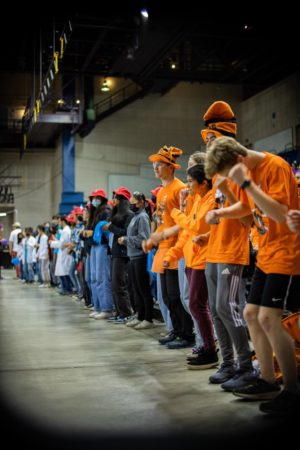
“In our second regional, we did really well and we were selected in the first alliance, which was the winning team in that event,” junior and team captain Kathryn Raynaud Richard said. “That was the first event we won since 2010, so it was a huge deal.”
This qualified the Wildhats for the World Championships, where they competed in the Daly Division. Team 100, however, did not qualify for the next round of matches, otherwise known as Einsteins. Even so, the Wildhats learned valuable lessons in STEM and made new relationships with other teams.
“FIRST really emphasizes promoting STEM in general,” sophomore and Business lead Ravi Malhotra said. “It’s not all about the competition but they want people to be interested and learn new things, make connections with people, and gain real-world experience…Part of FIRST is gracious professionalism and I think all of the people there totally exemplify that. ”
As a business lead, Malhotra promotes the Wildhats on social media and at outreach events to gain new sponsors and mentors to help fund the team. Since the team budget was $50,000 this past season, Malhotra ran fundraising events to cover the expenses of parts and traveling to competitions.
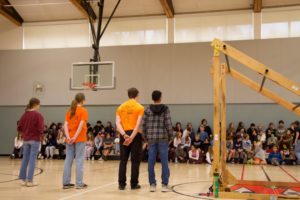
“We have a big photo database that we use for trying to attract sponsors for our program to support it,” Malhotra said. “Then also [we do] outreach, so we went to Woodside Elementary in October. [Another] event we went to [was] a STEM fair in the Los Altos History Museum.”
In preparation for next year, the Wildhats look forward to competing at Worlds again by increasing practice and planning over the offseason to develop more consistency with their robots.
“In the offseason, which is [the] summer and all of the first semester, we want to work on developing modular systems, [which are] universal systems that will help us in games,” Payne said. “[We want to develop] elevators to get parts of the robot off the ground, more ways to intake game pieces, game piece interaction, and also [more] robot control.”
As the 2023 robotics season comes to a close, the Wildhats urge more people to join the team next year to learn the ins and outs of robotics. Even if students have no experience, Team 100 values individuals with different perspectives and new ideas.
“The game was super interesting because of all the different ways you can accomplish the tasks that we had to set out,” Malhotra said. “And because of that, there are so many different solutions that work surprisingly well.”


